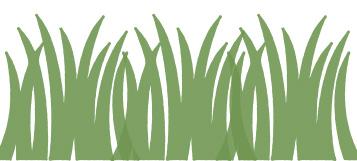
2 minute read
Soil Forming Factors and the Soil Profile
Five soil forming factors:
Soils are formed through the weathering of bedrock, which occurs via 1) climate (principally temperature and precipitation) and 2) the activity of living organisms, and it is affected by 3) the length of time that weathering has occurred. Soils develop differently given 4) topography (for example top of a ridge, on a slope, or at the bottom of a drainage) and 5) the original composition of the bedrock. Soil is a balance of material accumulated, transformed, and removed over space and time.
Advertisement
A hypothetical soil profile is shown on the right. You may see these visibly different layers in croplands, but we don’t commonly see a cross section like this on the rangelands of New Mexico and Colorado, where we are more likely to see an arid soil profile, like the one shown on the far right. Soils in this region are often shallower, due to water-limited soil formation, and will have no O horizon and a smaller A horizon due to water-limited plant growth and reduced accumulation of dead plant matter on the surface. It is useful to understand the soil profile of a ranch or farm to understand what can be expected from the architecture and behavior of its soil under management practices. (For information on ways that management affects the soil profile, see Soil Management Considerations, page 97)
Climate Organisms
Topography Time Bedrock Glossary
Bedrock
the solid rock formed by earth processes that underlies the soil. Soil is formed when weathering breaks down the solid bedrock. Bedrock is often referred to as the soil “parent material.”
Inputs
Transformations
Hypothetical Soil Profile
Outputs
Horizons
O
Organic
A
Surface
• Considered separate from the mineral soil, as it is made up of plant and animal matter, called collectively organic matter, accumulated from the surface
• Organic material deeper in the O horizon will be progressively more decomposed
• Considered the top layer of the mineral soil, formed from weathering of the bedrock
• Often darker in color due to the presence of organic matter that has been deposited from above
• Can have a coarse texture due to water displacement of finer materials to the horizons below
A
Surface
B
Subsoil
C
Substratum
B
Subsoil
• Anchor for plant roots, especially for deep-rooted/tap-rooted plants and crops
• Zone of accumulation of nutrients and finer particles from the above horizons
• Layer where calcium carbonate can accumulate, potentially forming a restrictive layer
C
Substratum
R
Bedrock
• Mixture of soil and bedrock, which maintains some of the structural features of the bedrock
• Zone of active soil formation where the bedrock is being weathered
• The rock from which the soil continues to form as the effect of the five soil forming factors
• This is the source of many of the inherent physical and chemical characteristics of the soil










